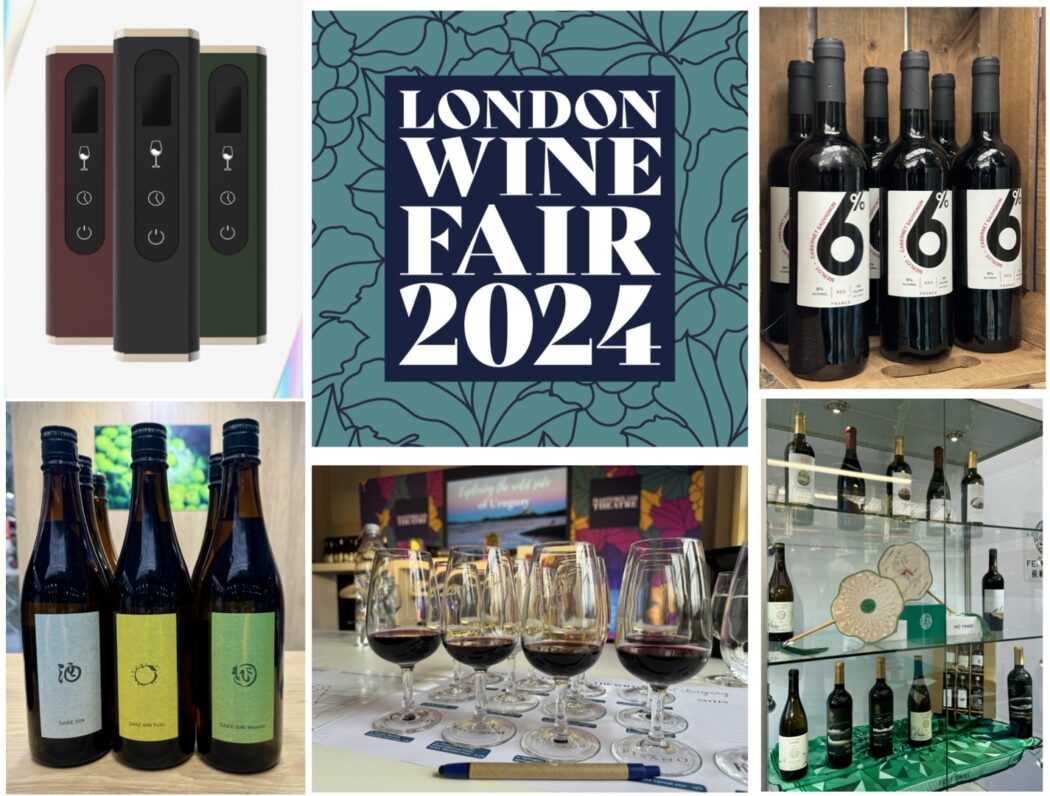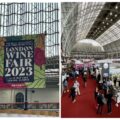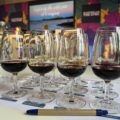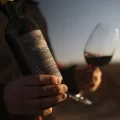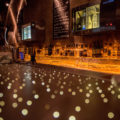The 2024 edition of the London Wine Fair (LWF) was attended by 401 companies and 9,243 visitors, resulting in a 23:1 visitor-to-exhibitor ratio. This year saw higher quality engagement from attendees, contributing to the fair’s ongoing success. While there was a slight decline in attendees and exhibitors, the audience was notably more engaged. The Essential Planner for planned activities and meetings, along with Bottlebooks for tasting notes, continued its popularity as tools to support effective interactions between attendees and exhibitors.
Country-Focused Areas and New Additions
 The London Wine Fair (LWF) continued to showcase a diverse array of international wines and spirits, featuring dedicated areas for countries such as Bulgaria, Georgia, Greece, France, Italy, Ukraine, the Czech Republic, WineGB, and Japan. These pavilions offered visitors the opportunity to explore the rich and varied wine cultures from around the globe. A notable highlight was Tuesday’s pop-up themed tasting of South African wines, which received enthusiastic acclaim. This event highlighted the exceptional quality and variety of South African wines, including a unique orange Aperitivo Spritz made with local sparkling wine.
The London Wine Fair (LWF) continued to showcase a diverse array of international wines and spirits, featuring dedicated areas for countries such as Bulgaria, Georgia, Greece, France, Italy, Ukraine, the Czech Republic, WineGB, and Japan. These pavilions offered visitors the opportunity to explore the rich and varied wine cultures from around the globe. A notable highlight was Tuesday’s pop-up themed tasting of South African wines, which received enthusiastic acclaim. This event highlighted the exceptional quality and variety of South African wines, including a unique orange Aperitivo Spritz made with local sparkling wine.
As for my home country, Argentina, had a strong representative with outstanding winery Familia Zuccardi demonstrating the versatility of Malbec —from the concrete-fermented Concreto to the elegant José Zuccardi— along with other must-taste varieties like Bonarda Argentina, presented by Hatch Mansfield. However, it would be wonderful to see Argentina featured as a dedicated area, offering a broader selection of wineries would capture the full spectrum of what our country’s exceptional wine-scene has to offer.
New additions to the fair included wines from the United States, specifically New York and California, as well as wines from China, particularly the Fei Tswei winery. One of the highlights was the Judgement of London competition, which created a lot of buzz and was ultimately won by Europe. This competition drew parallels to the historic Judgement of Paris and emphasised the high standards of European winemaking.
Memorable Masterclasses and Tastings
 We were fortunate to attend a masterclass on the wines of Uruguay, which was truly eye-opening. Uruguay’s unique terroir and winemaking techniques were highlighted, offering attendees a deeper understanding of the region’s potential. Another standout was an incredible sake tasting titled “Exploring the Past and Modern Dynamism of Sake”, hosted by Natsuki Kikuya, Sake Samurai and Founder of the Museum of Sake in London. This tasting took us on a beautiful journey through the history, regions, and styles of sake. Kikuya’s expertise provided a comprehensive overview of sake, from traditional methods to modern innovations.
We were fortunate to attend a masterclass on the wines of Uruguay, which was truly eye-opening. Uruguay’s unique terroir and winemaking techniques were highlighted, offering attendees a deeper understanding of the region’s potential. Another standout was an incredible sake tasting titled “Exploring the Past and Modern Dynamism of Sake”, hosted by Natsuki Kikuya, Sake Samurai and Founder of the Museum of Sake in London. This tasting took us on a beautiful journey through the history, regions, and styles of sake. Kikuya’s expertise provided a comprehensive overview of sake, from traditional methods to modern innovations.
One of the unique experiences at the fair was a vertical tasting of wines from Lebanon’s Chateau Ksara, which offered insight into the French cultural heritage in Lebanon – as it was taken over by France after the fall of the Ottoman Empire – but also on their deep and ancient relationship to wine, that started in their Phoenician traders time, as Phoenicians were amongst the first Wine Merchants, where Romans built a Bacchus temple that still stands there to this date. Chateau Ksara was founded in 1857 by Jesuits, has an astonishing Roman-built wine cellar built that can keep up to 800,000 bottles and was bought by the current family in 1973. We had the chance to taste verticals of both their Chateau Blend and their Cabernet Sauvignon, with their Blend shining on the account of its balance and complexity brought by the combination of the Cabernet Sauvignon with Merlot and Petit Verdot, with the 2012 tasted being the absolute star.
Continuing with an adventurous spirit, we attended a Pisco from Atacama (Chile) tasting that included five different examples of Pisco also unique craft cocktails to highlight their distinctive characteristics.
Notable Exhibitors
Discovery zone: Latest wine tech advances

Kairos Aerator, this innovative device uses EM waves to aerate wine in seconds. It is portable (pocket size), maintenance-free, and can aerate up to 500 glasses per charge. The technology allows for the aeration process to be completed in seconds, for example, we got the chance to taste a wine aerated for 60 seconds using this device, that equates to an hour of traditional aeration. To fully charge, it takes 2 hours, and it is maintenance free as it doesn’t require cleaning and can be used for whites or reds, even at the same time.
This gadget brings spontaneity to wine enjoyment, making even the most decant-worthy wines ready to drink in a matter of seconds.
Japan Pavilion
Country pavilion showcasing Sake (in all of its versions – aged, sparkling, unpasteurised, unfiltered, diverse polishing ratios, Junmai and alcohol-added versions) as well as Shochu, Gin, Umeshu (Plum wine) and Whisky.
 Takamasamune presented mind-blowing gin distilled from sake. The gin came in three different versions: classic with juniper, yuzu-flavored, and wasabi-flavored. With the last one being a strong contender to have on the rocks to enjoy its particular flavour profile and aromas or in a dirty martini with cocktail onion garnish to impress.
Takamasamune presented mind-blowing gin distilled from sake. The gin came in three different versions: classic with juniper, yuzu-flavored, and wasabi-flavored. With the last one being a strong contender to have on the rocks to enjoy its particular flavour profile and aromas or in a dirty martini with cocktail onion garnish to impress.
Another must-try included the Asakura whisky which is a koji fermented whisky from a Sake brewery that decided to launch the distilled line for their 100th anniversary and specialty yeast fermented sake from Satonami, they produce Saykoh Junmai Ginjo Omachi that’s fermented using Rose yeast and Spring Sakura, that’s produced with the Sakura (cherry blossom) yeast which is extremely intense in aromatics and delicious. The brewery also produces sake packaged in pouches, reducing their carbon footprint and making them ideal for picnics.
Low and No category – Mindful drinking experience
I’ve become personally invested in since I’ve started driving. As a someone that thoroughly enjoys a drink and trying new things (and a Sommelier), I’m not a huge fan of soft drinks and when I go out and want to drive back, I really want to enjoy what I’m drinking. I think that the Low&No range is starting to bring us a broad spectrum of exiting possibilities.
 6Percent wines – a de-alcoholised red from Russell Lamb and his wife Gabi, that in order to gain back complexity and keep alcohol levels low, they add back some of the original wine to get to 6% abv making wines have a steady finish and half of the calories.
6Percent wines – a de-alcoholised red from Russell Lamb and his wife Gabi, that in order to gain back complexity and keep alcohol levels low, they add back some of the original wine to get to 6% abv making wines have a steady finish and half of the calories.
 Cypher – From Southern France, 0% abv wines that are organic, low calorie (2 times less than non-alc beer, 5 less than a soft drink and 7 less than a glass of wine), labels and cartons made from recycled materials, water-based inks and part of the line is also available in cans, reducing carbon footprint vs glass bottles. Making mindful drinking a lifestyle choice. Fabien Revol clearly personifies their branding, with his easy-going, relaxed persona. Cypher calls out for continued summer fun, as the “endless summer drink”.
Cypher – From Southern France, 0% abv wines that are organic, low calorie (2 times less than non-alc beer, 5 less than a soft drink and 7 less than a glass of wine), labels and cartons made from recycled materials, water-based inks and part of the line is also available in cans, reducing carbon footprint vs glass bottles. Making mindful drinking a lifestyle choice. Fabien Revol clearly personifies their branding, with his easy-going, relaxed persona. Cypher calls out for continued summer fun, as the “endless summer drink”.
Osco apéritif, non-alcoholic and organic vermouths, made from verjus (juice from unripen grapes) from Perigord, infusions from Occitania and natural aromas from Provence (plants, spices and gentian, which give its traditional bitterness) with a classic (white) and a red version (fruity and spicy, with lots of character), which both mix incredibly well with tonic and are also great choices for building Low&No cocktails. This isn’t your run of the mill de-alcoholized vermouth, it’s alcohol free from the get-go thanks to its Verjus base. Labels are made from 100% recycled paper; the boxes are made from recycled materials and are recyclable themselves and so is its bottle. Natural and low calorie.
Another exiting player on the Low-alc section was Lyre’s Amaretti, this is an impossibly crafted spirit, with an astonishing 0.5% abv and being nut-free, it blows you away with bursting flavours of rich nuts, marzipan, vanilla and caramel and a very reasonable price.
Other Exiting Drinks
I’m very excited to see the new spin producers are putting on Mead! Having drunk it for the first time on a Medieval themed Fair in Argentina, I remembered it as a somewhat dense and sweet drink, that we used to drink from a horn – and I still have one at home for this! I was delighted to find that on the Drinks Britannia area there were some honey wines (aka Mead!) by Loxwood Meadworks, coming from West Sussex, that were ranging from sweet to off-dry that were delicate and versatile for food pairing.
 Chinese wines by Fei Tswei, located in a mountain area of China, Ning Xia Helan Mountain East that was established in 1996. The altitude along with the Yellow River slow down the ripening process, making tannins more mature, add complexity to the aromas and flavours and retains acidity in the grapes. Another piece to note is that due to the arid weather they experience by being next to the mountain, they use that as leverage to continue working organically, to work towards an ecological balance, thin includes the organic recycling of biological materials into fertiliser by aerobic fermentation and having wildlife around the vineyards – hares, foxes, hedgehogs and a large number of birds – that use the vineyard as their own paradise. If you do get the chance to get some of their wines in your hands don’t miss out on tasting their Cellared Marselan 2019, their Syrah Reserve 2019 or their sweet Petit Manseng 2018. You will not be disappointed!
Chinese wines by Fei Tswei, located in a mountain area of China, Ning Xia Helan Mountain East that was established in 1996. The altitude along with the Yellow River slow down the ripening process, making tannins more mature, add complexity to the aromas and flavours and retains acidity in the grapes. Another piece to note is that due to the arid weather they experience by being next to the mountain, they use that as leverage to continue working organically, to work towards an ecological balance, thin includes the organic recycling of biological materials into fertiliser by aerobic fermentation and having wildlife around the vineyards – hares, foxes, hedgehogs and a large number of birds – that use the vineyard as their own paradise. If you do get the chance to get some of their wines in your hands don’t miss out on tasting their Cellared Marselan 2019, their Syrah Reserve 2019 or their sweet Petit Manseng 2018. You will not be disappointed!
The London Wine Fair 2024 showcased an impressive array of wines and spirits, highlighting both traditional and innovative approaches in the industry. With a focus on quality engagement and diverse offerings, the fair continues to be a significant event in the wine calendar.
 LONDON WINE FAIR
LONDON WINE FAIR
instagram.com/london_wine_fair

